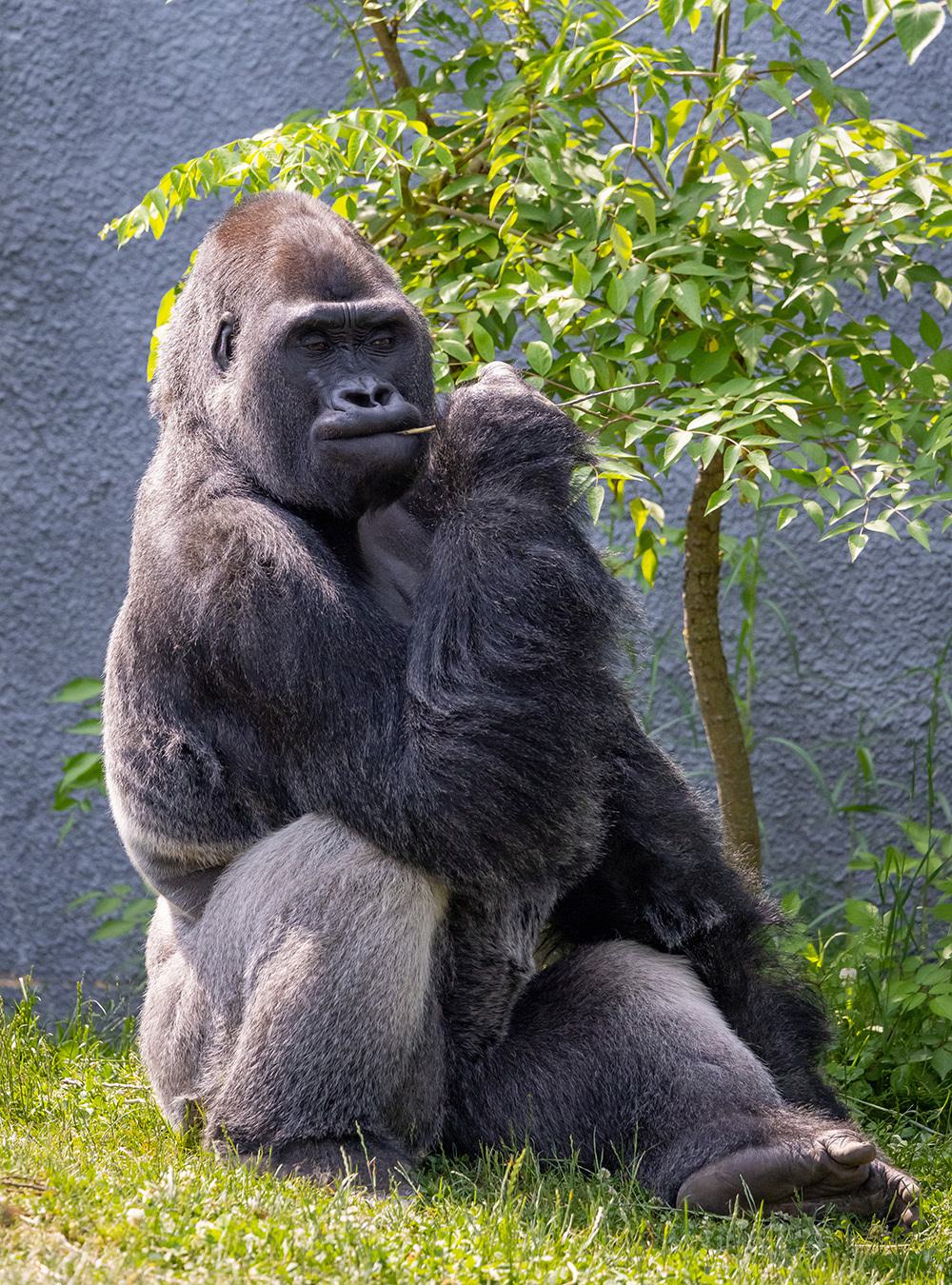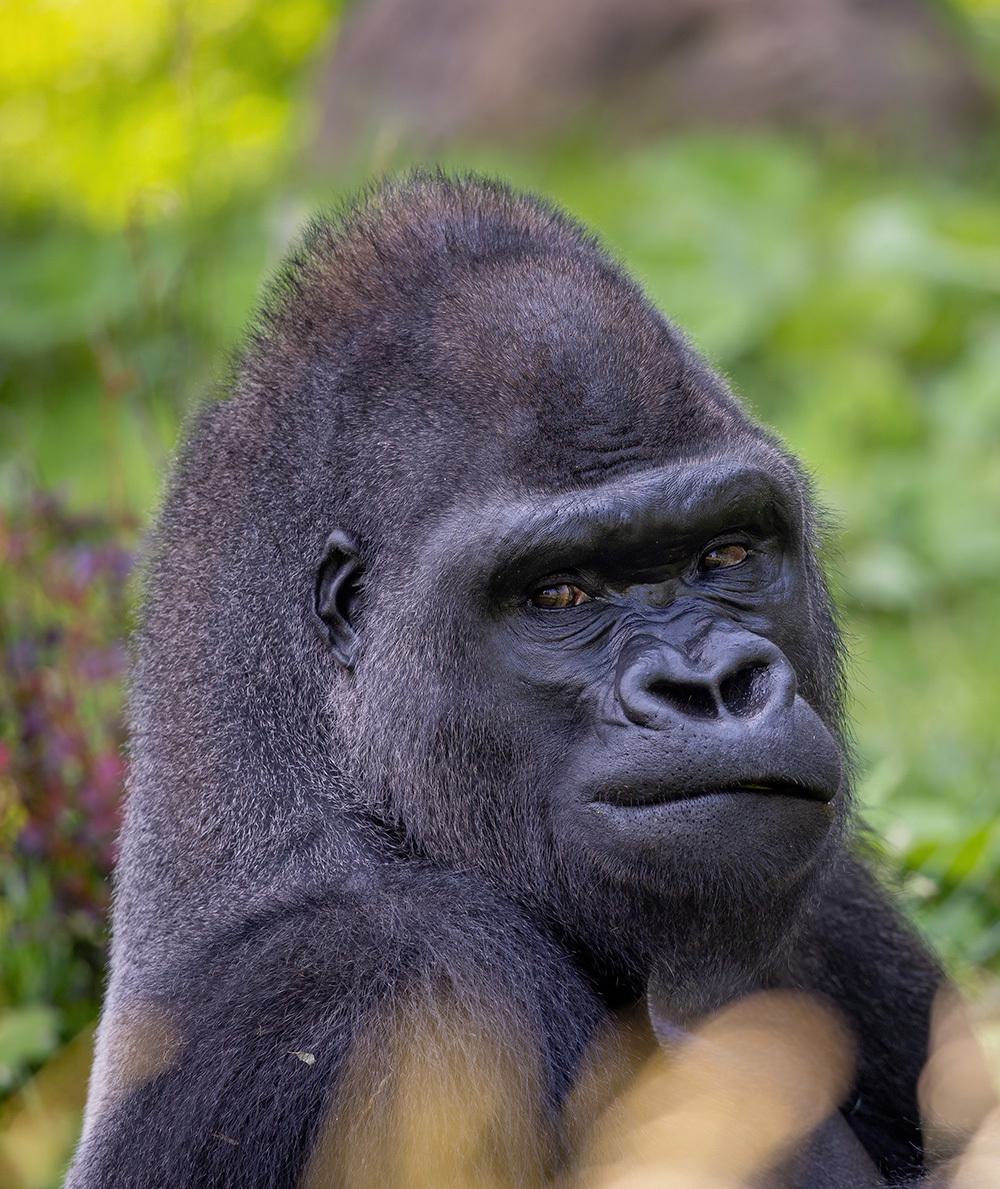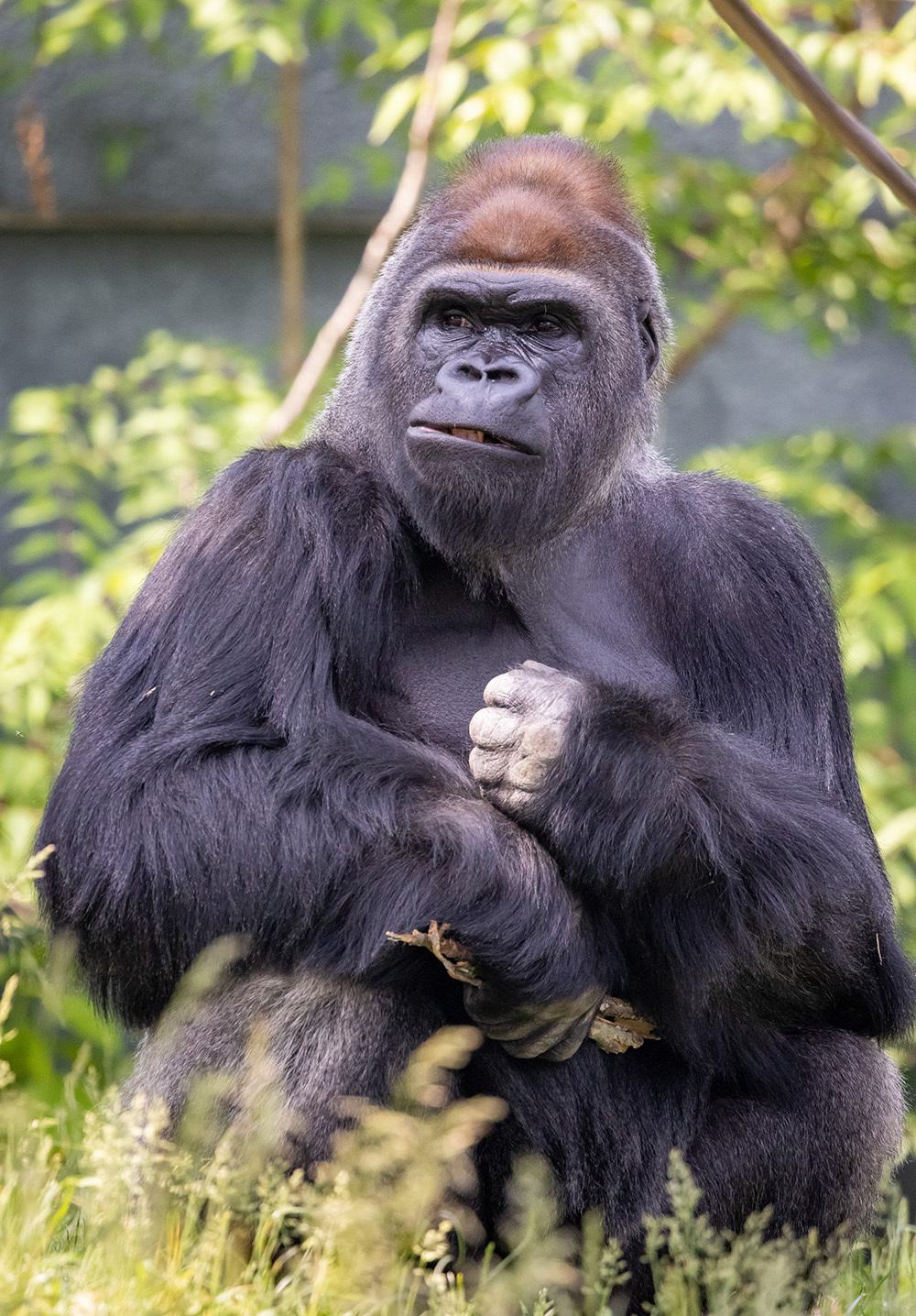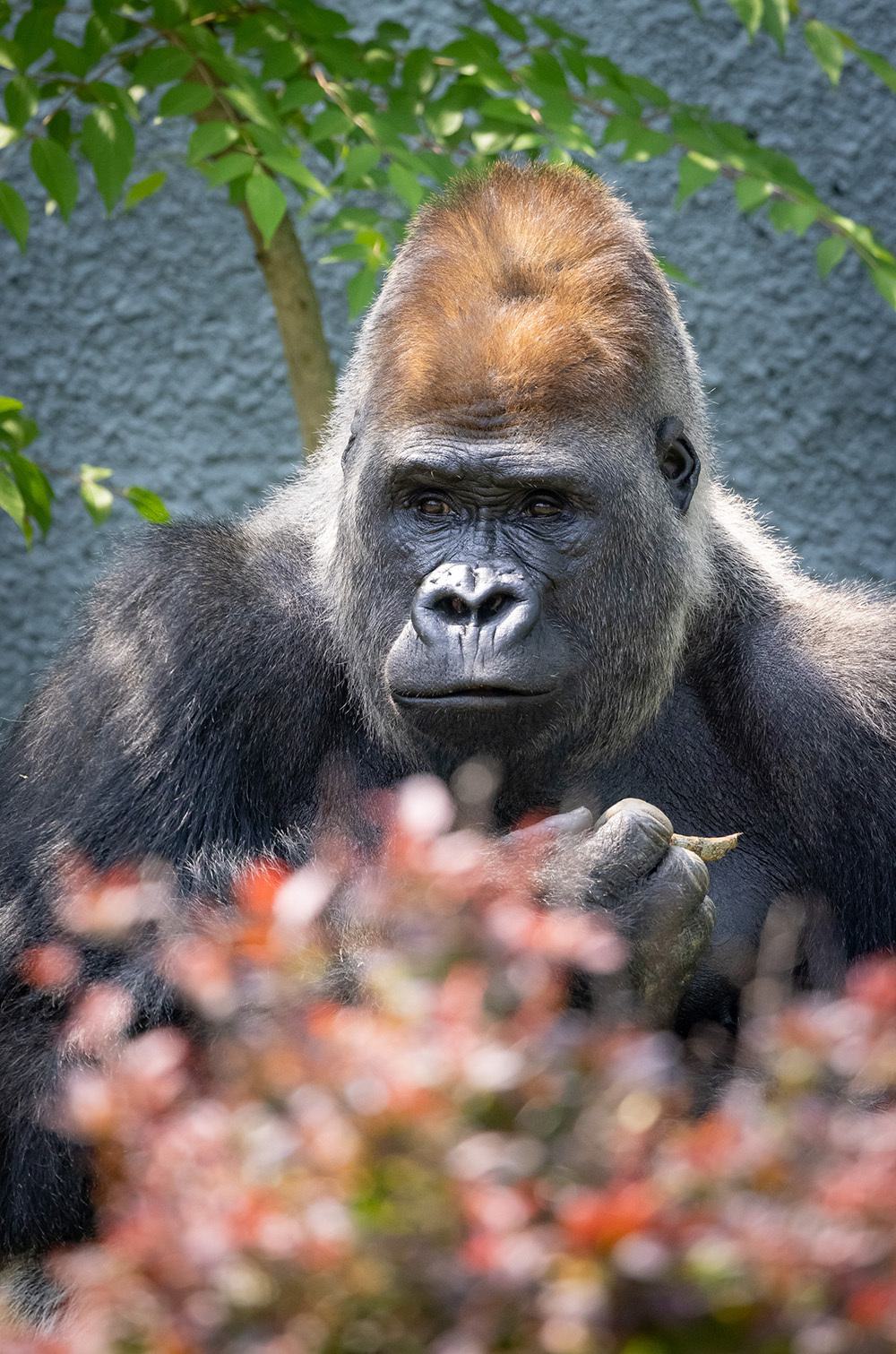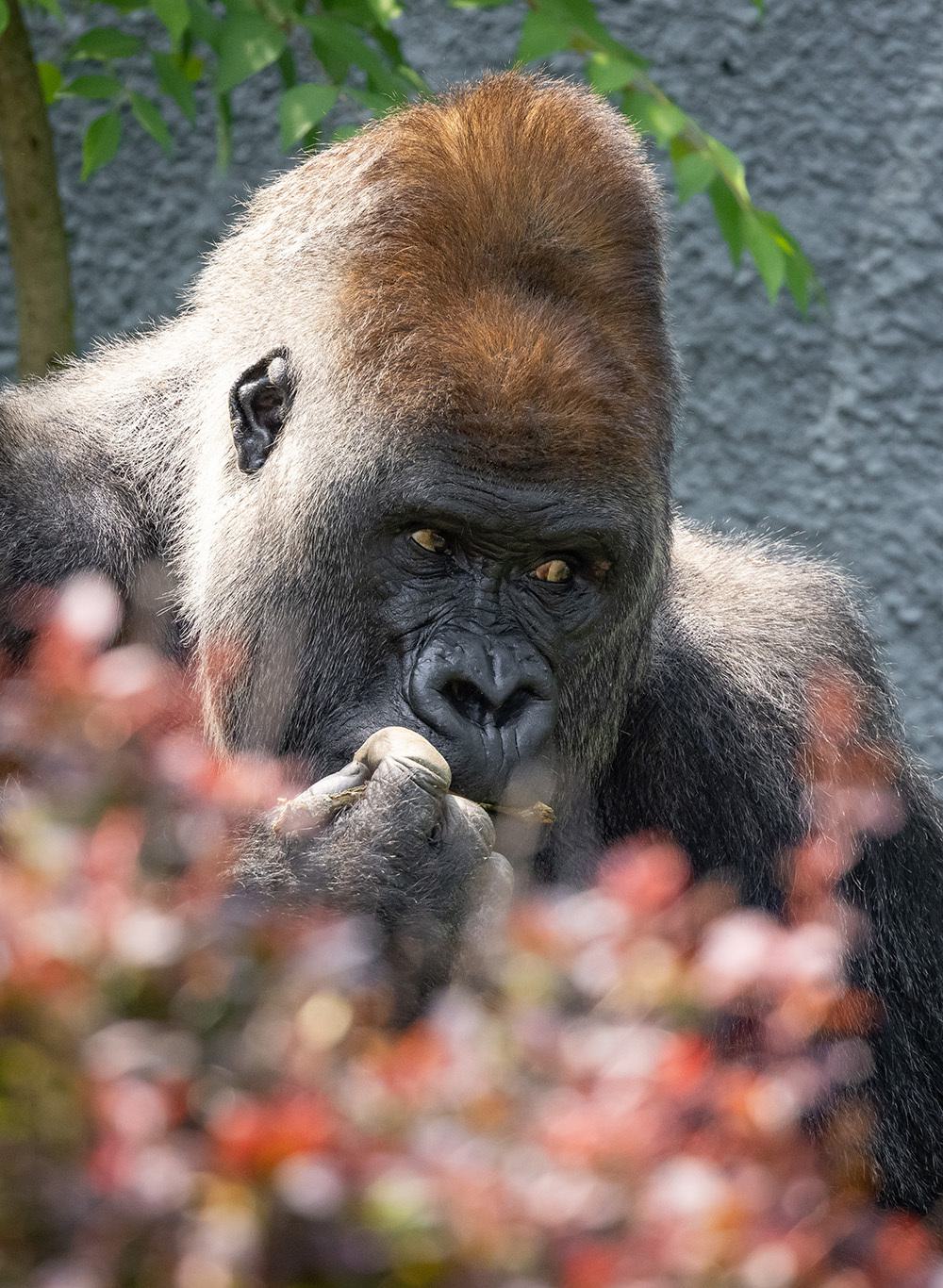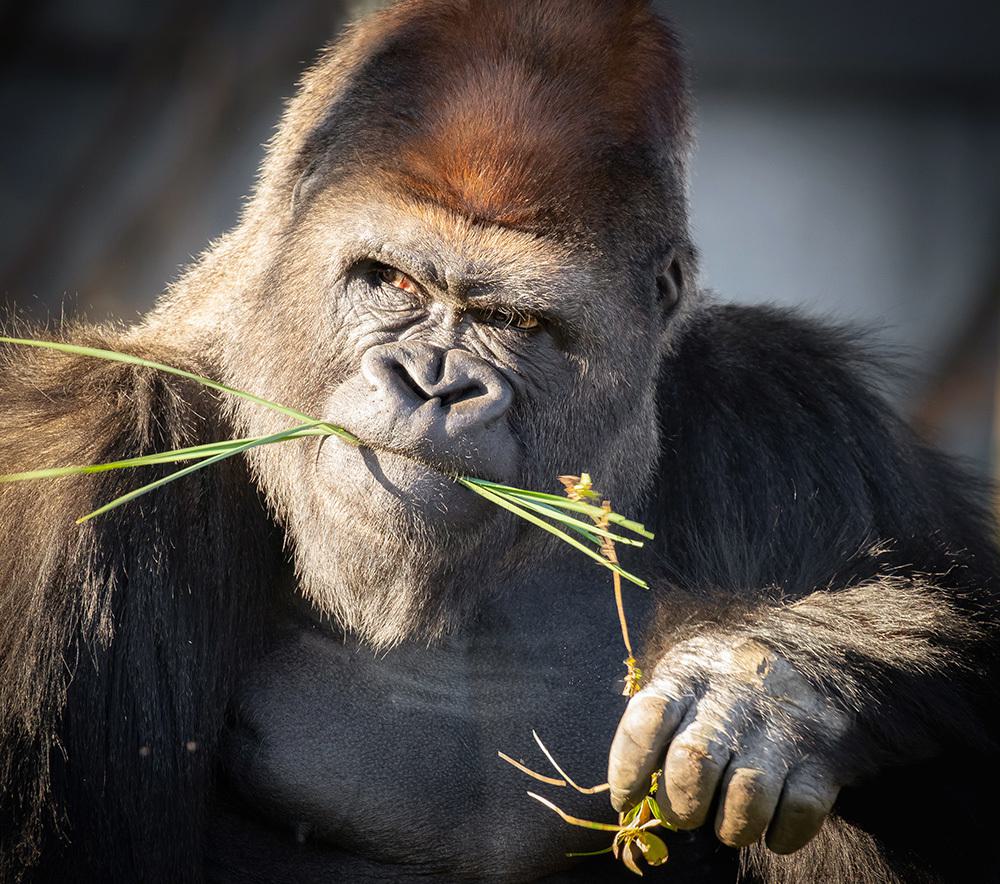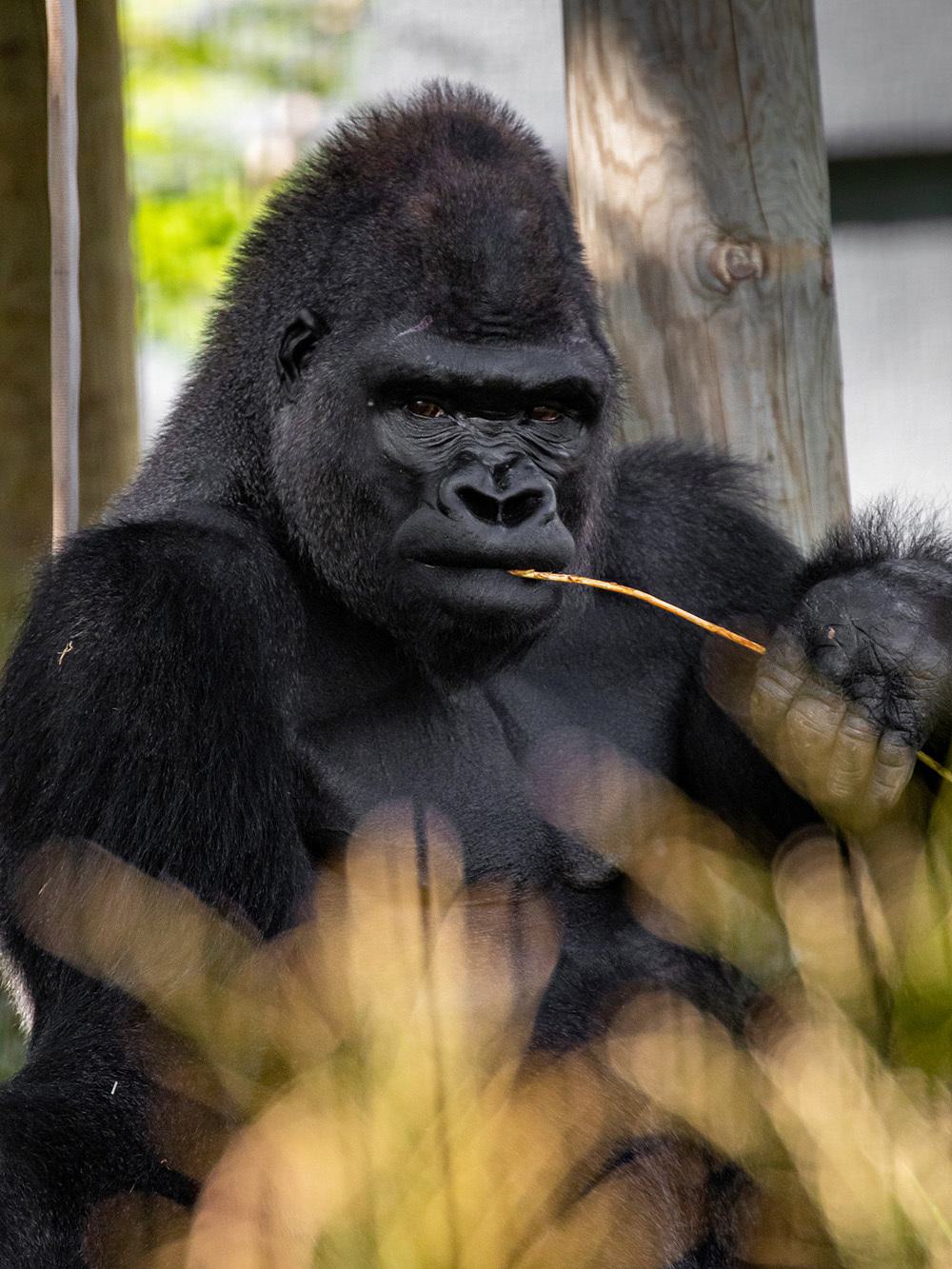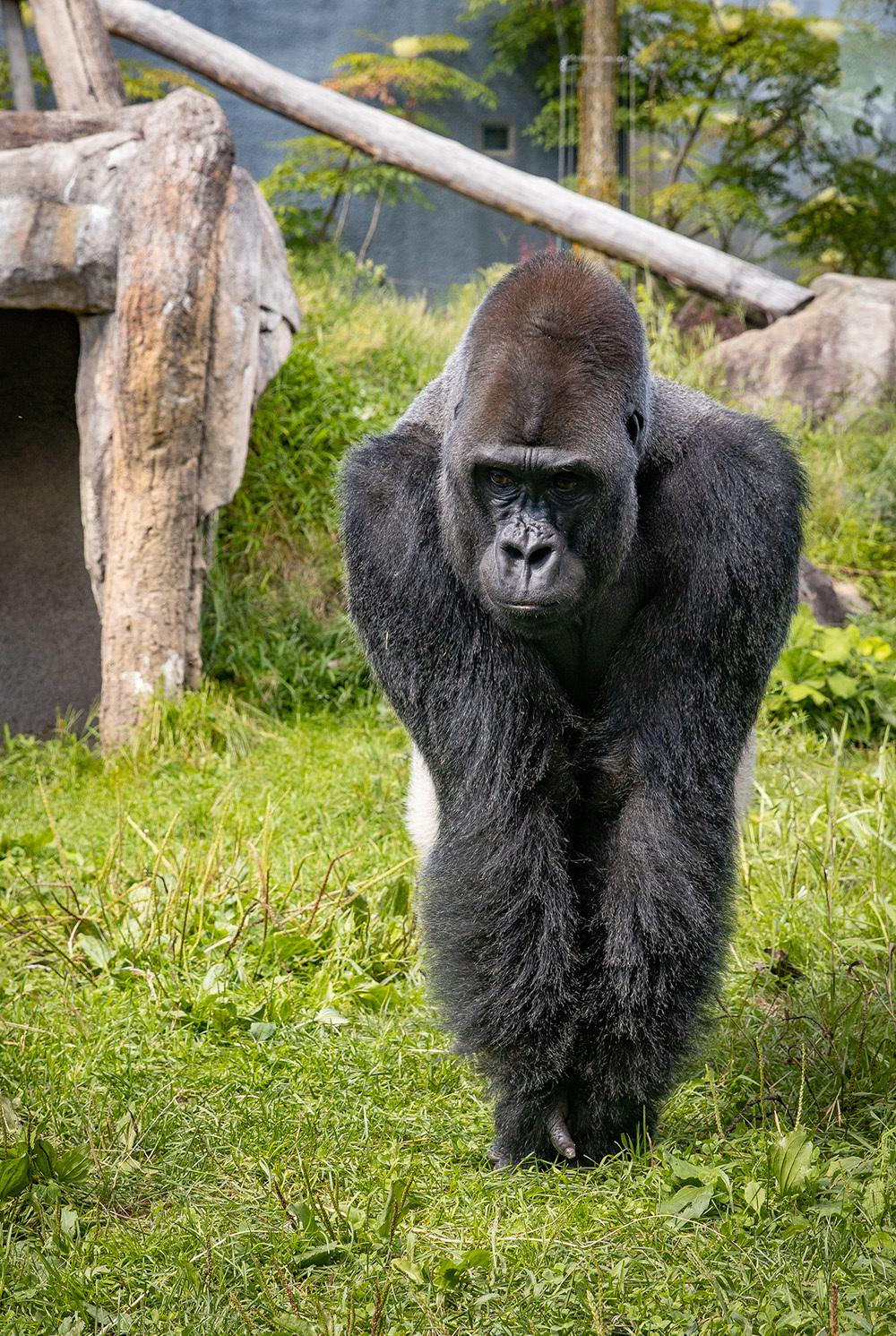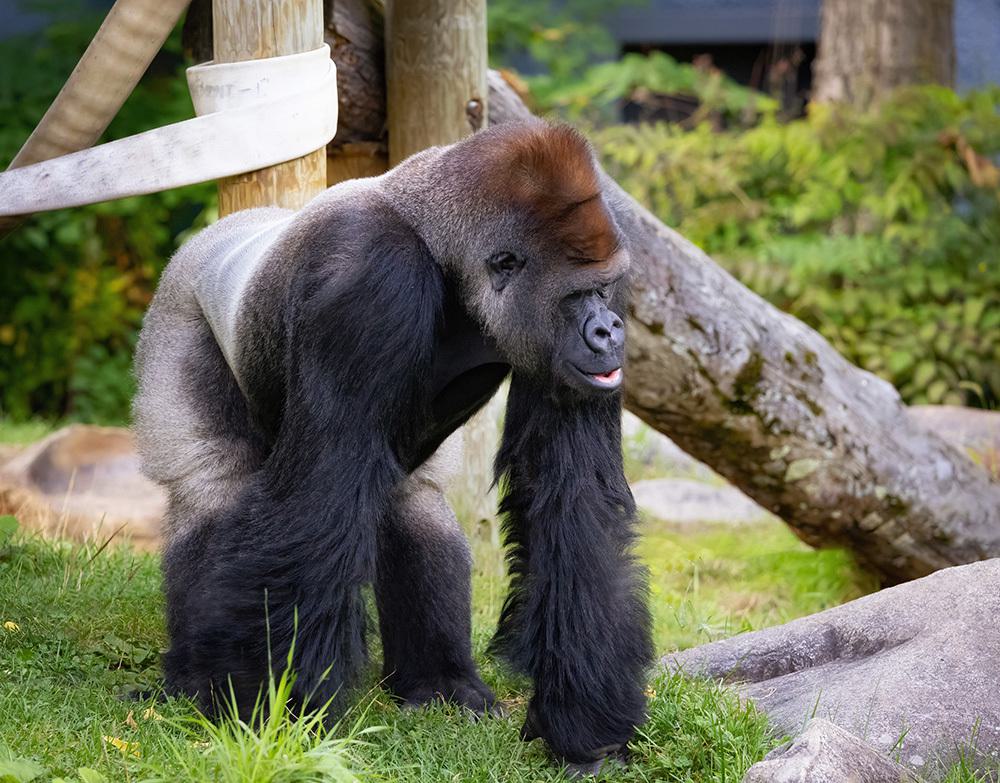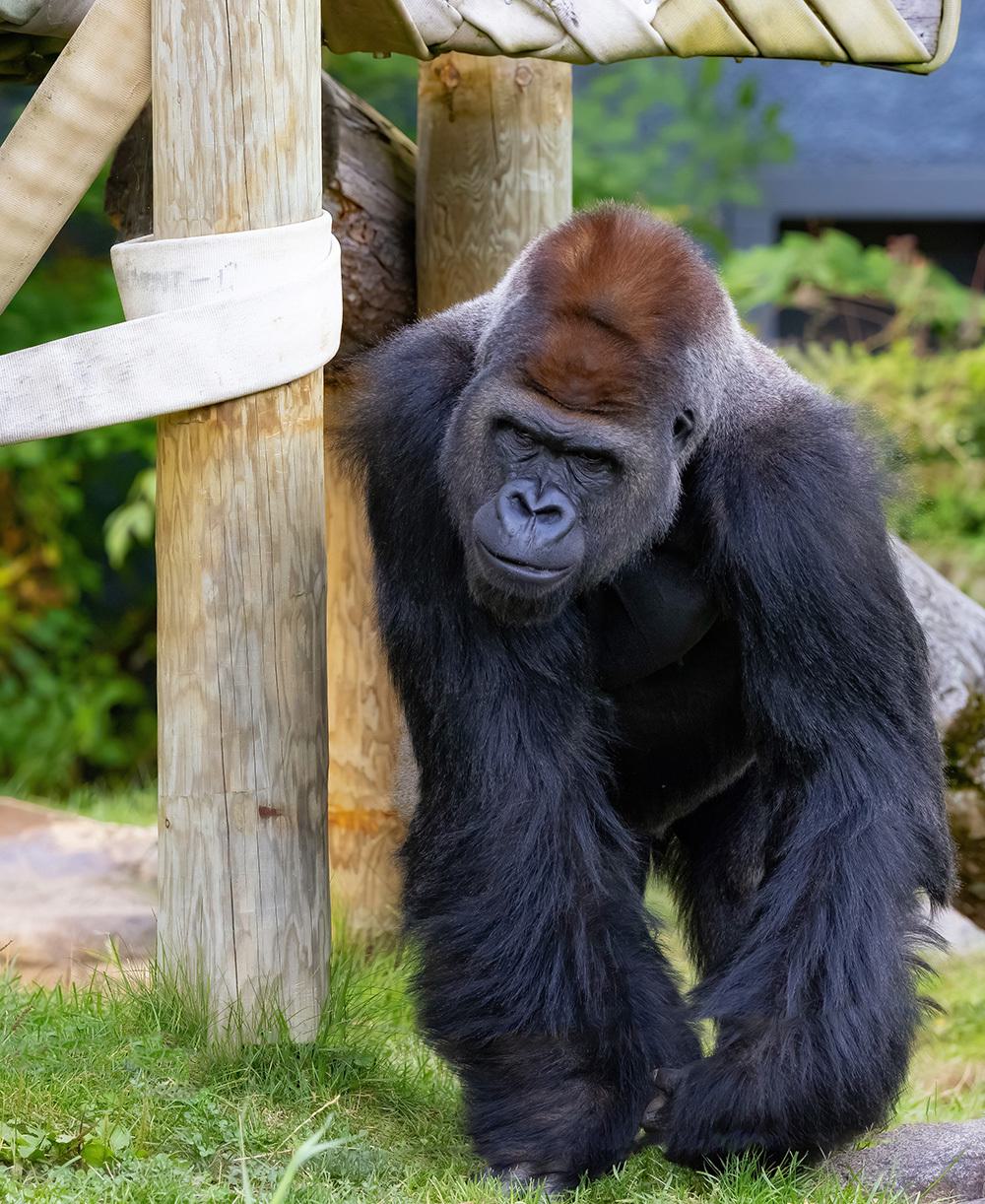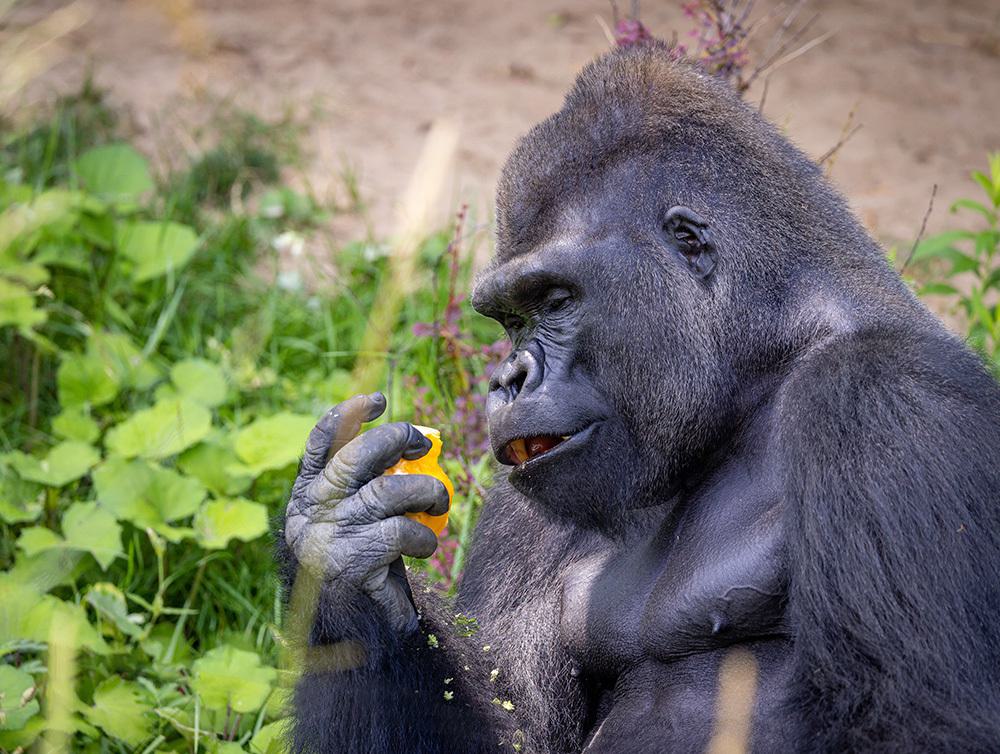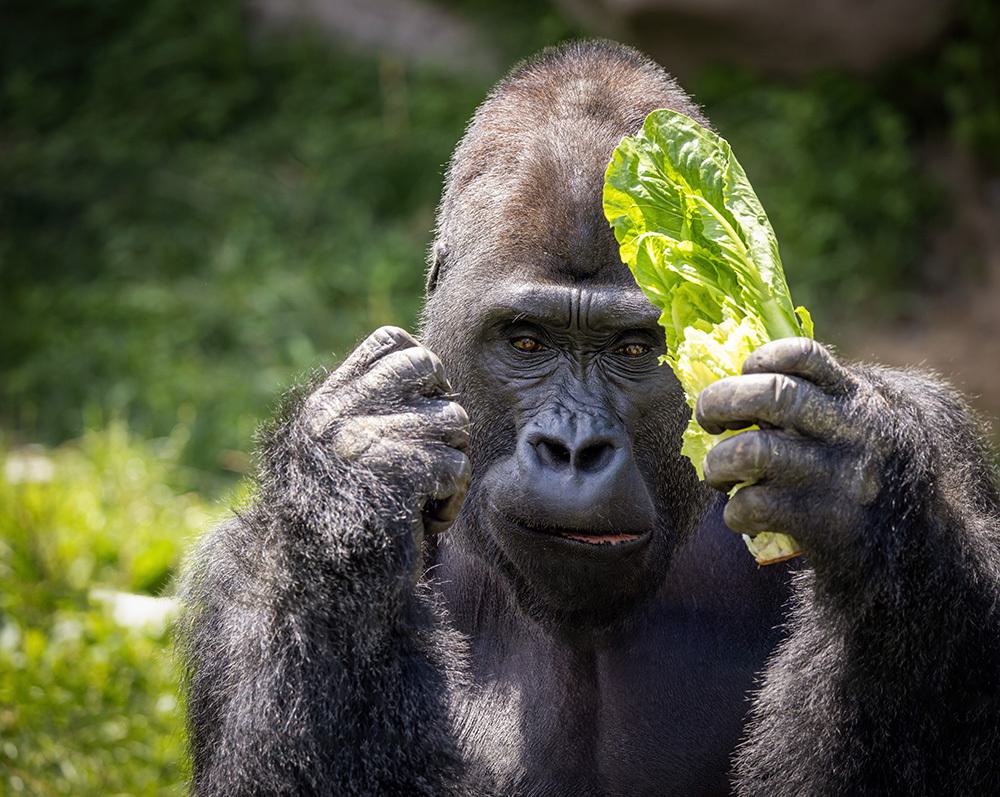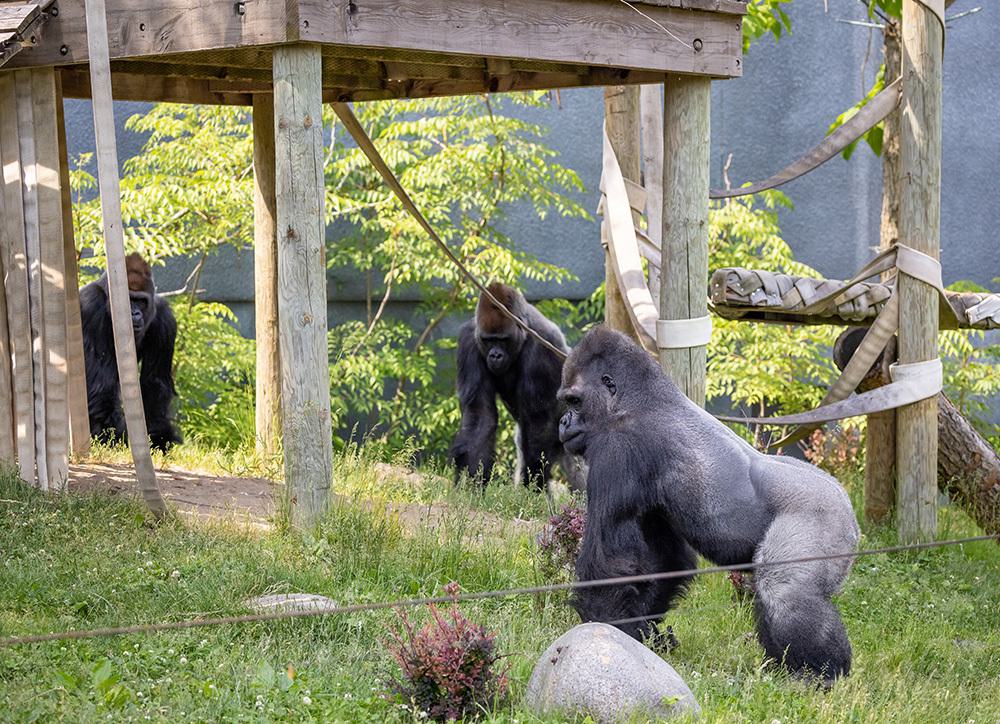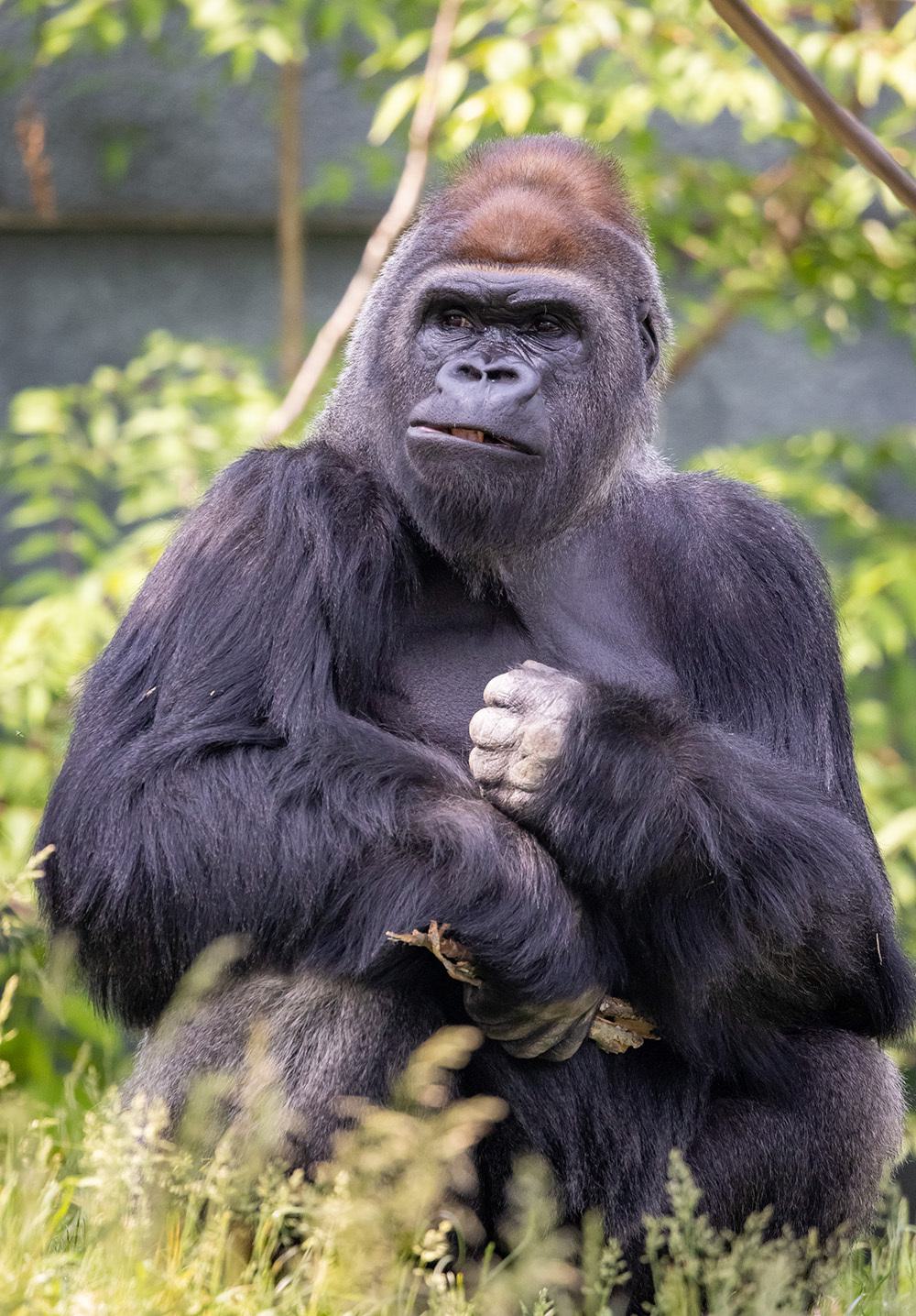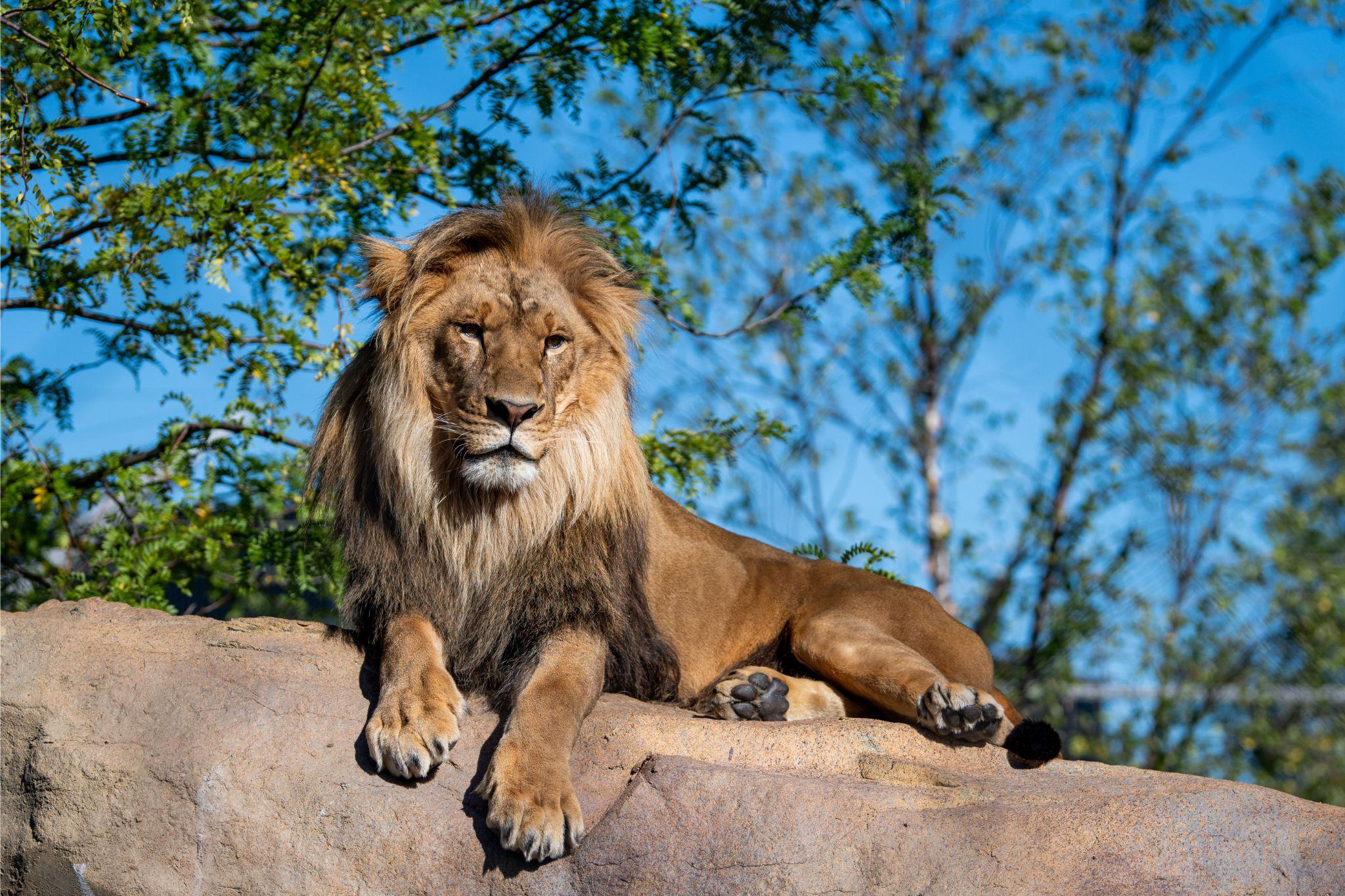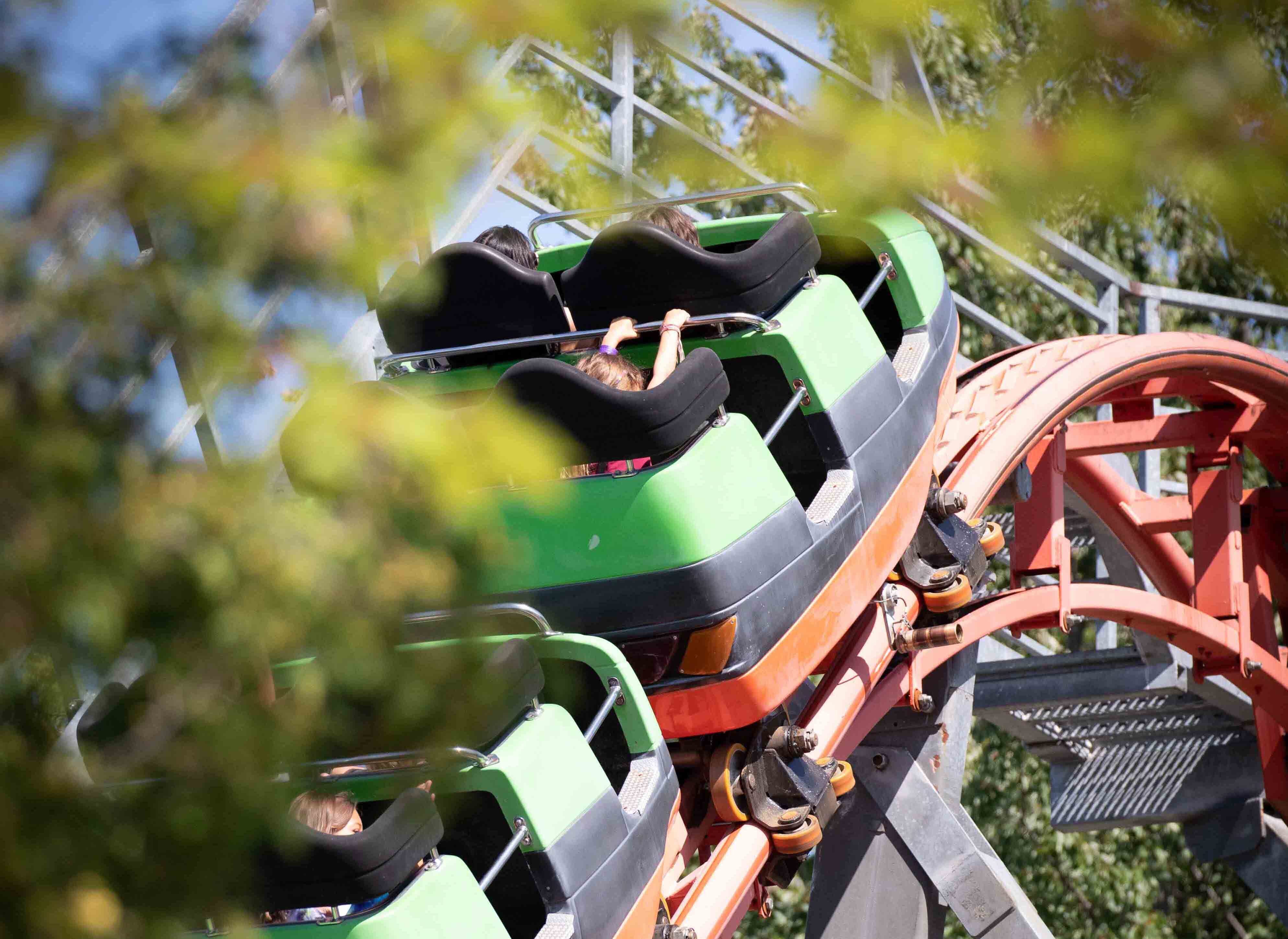Four Strapping Lads Under one Roof!
The Zoo de Granby has been housing 4 male gorillas by having them live in pairs until last spring: Zwalani and Jawara occupied one space, while Louis and Kuchimba another. But the Zoo’s animal experts wanted these 4 burly guys, each of them weighing almost 150 kg, to be able to live together. The goal here is to share all the available space and enjoy the benefits of socializing with each other, which is essential for this species.
It must be said that if the Zoo de Granby is one of the few institutions to successfully bring single males to live together, it’s because we take a methodical approach to ensure that things are done right!
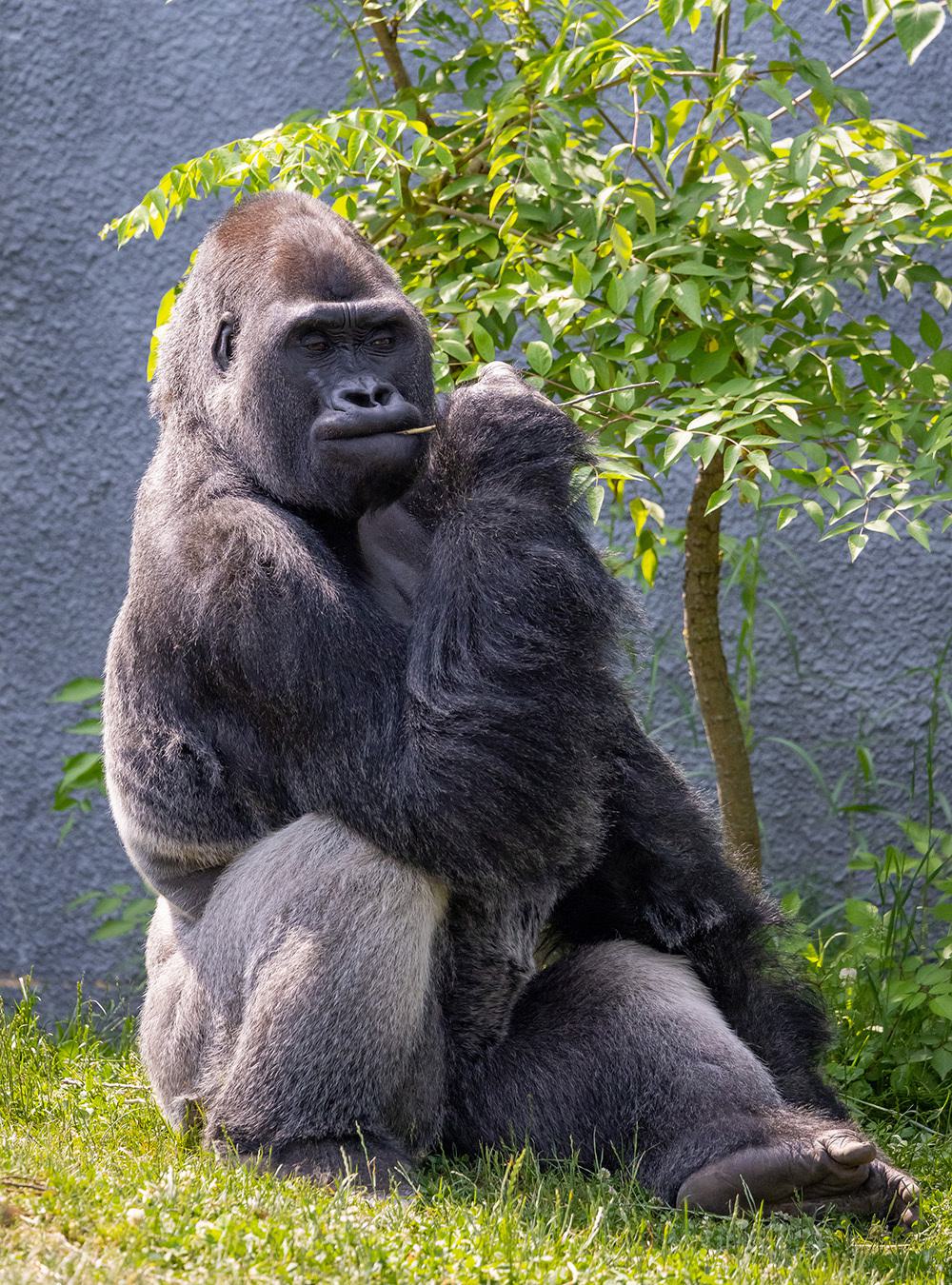
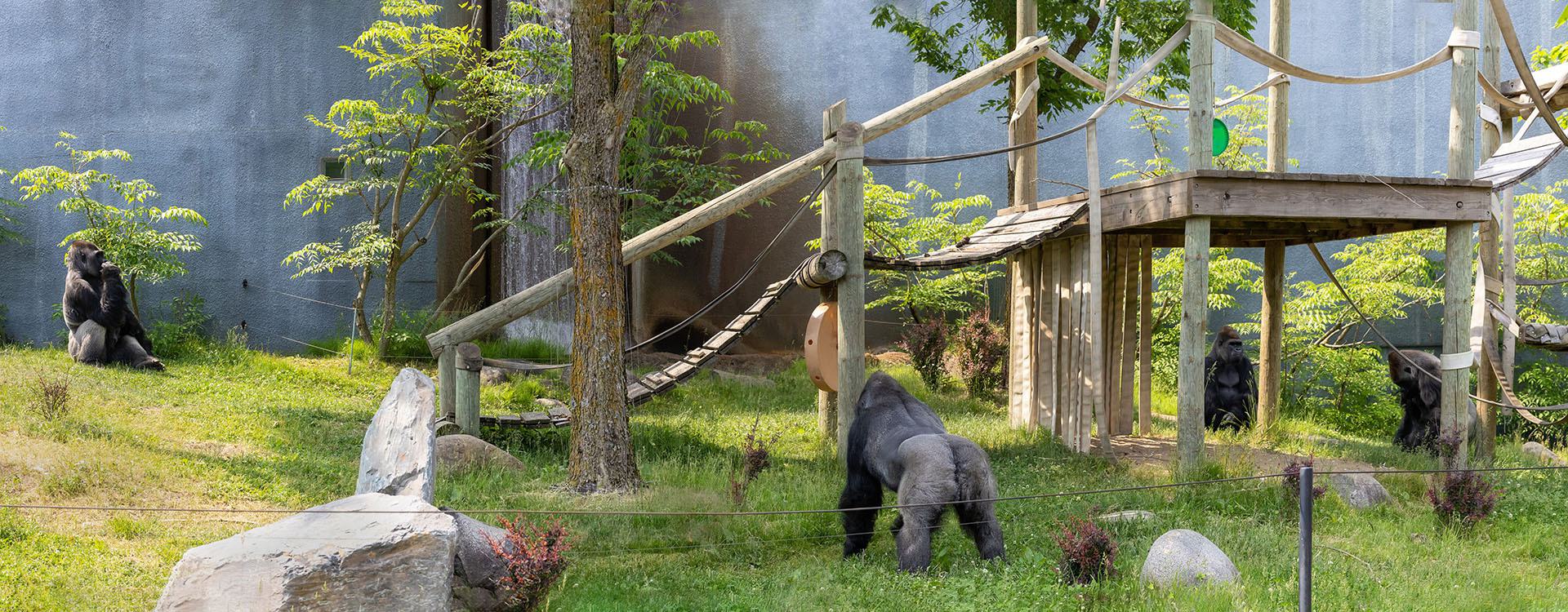
Gorillas are social animals that live in groups.
Family clans are generally made up of a mature male, called the silverback, a few females and their offspring. When they reach sexual maturity, the young males leave their group and sometimes gather just long enough to establish their own family clan, which can take several years; In fact, some never manage to do so.
Just as in the wild, young males born in zoos must leave their family clan when they reach a certain age to avoid confrontations with their progenitor.
Some institutions specialize in housing and managing groups of single males, which is the case at the Zoo de Granby.

The Integration
Integrating a new individual into a group (or, as was the case here, bringing two pairs together) isn’t an easy task. It’s a gradual, methodical process that requires the care team to invest a great deal of time.
Not only do they have to temporarily organize the spaces and meals differently, but they also have to spend long hours observing the individuals’ behaviour at each stage of the introduction. The males start by sighting and smelling each other. The next step has them come closer to each other, while still being kept separate with a wire fence.
Excellent knowledge of the species, but especially of each individual, makes it possible to continue onto the final step, which is to authorize direct and supervised contact between the animals. And yes, the process does create quite a commotion!
As with any social group, a hierarchy based on the dominance of individuals must be established to enable the group to function with a certain amount of order.
As you might expect, displays of intimidation and dominance can be spectacular in animals of this size and strength. With their powerful canines, these large herbivores can sometimes even inflict injuries on each other, and some of their wounds may indeed appear quite impressive. However, nature has a way of setting things right. Gorillas have an amazing natural healing ability, enabling even deep cuts to scar cleanly and quickly.
Plus, the veterinary team is always on hand to intervene if necessary! By gradually introducing the individuals to one another, the team minimizes the need to intervene (and to start all over again!), therefore maximizing the chances of success!
But if such an introduction is so delicate, why attempt it?
Quite simply because, in the end, cohabitation is beneficial to the physical and mental health of the individuals involved.
So, while dominance is being established, some demonstrations of strength and a few superficial injuries are exchanged. In fact, it won’t be surprising that the next time you visit our gorillas, you’ll witness a little roughhousing going on. Ultimately, however, the presence of others enriches each individual’s daily life and fills their social needs, so essential to their well-being.
It’s with this objective in mind that our teams of experts invested themselves in this process over several weeks. Indeed, they can say that they’ve truly accomplished their mission with our 4 fellows now living under the same roof!
